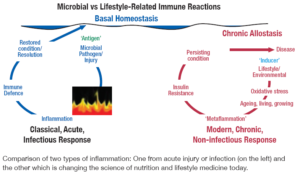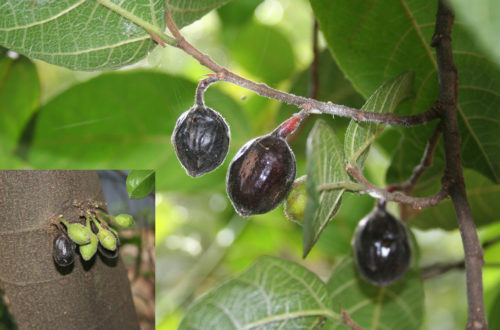In chapter 3, It’s More Than Just What We Eat, I cover the many Diseases of Nutrition that appear to be conditions that we would presume have bad luck or bad genes as their causes. Instead, evidence is mounting that our food choices influence the probability of suffering from these illnesses or not.
Modern Diseases of Nutrition (a short list)
• Obesity
• Type 2 diabetes
• Cardiovascular disease
• Hypertension
• Gout and other form of arthritis
• Atherosclerosis
• Obstructive pulmonary disease
• Emphysema
• Chronic liver disease or cirrhosis
• Nephritis or chronic renal failure
• Stroke
• Prostate problems and urinary tract infections
• depression
• senile dementia
• Alzheimer’s disease
• insomnia
• ADHD
• Chronic fatigue
• Osteoporosis and menopausal symptoms
• Macular degeneration
• Dental caries, gum disease
• Loss of hearing
• Autoimmune diseases
• Food intolerances, allergies
• Acne and asthma
• Eczema and psoriasis
• And probably most forms of cancer
This chapter also includes the growing problem of metaflammation which is a low grade, persistent form of induced metabolic inflammation that may not involve the immune system as completely as allergenic inflammation. In fact, if we do not change our lifestyle, we may never recover from it.

And it is not always simply the nature of the foods agricultural scientists have bred from early selections of edible species. Sure, they have taken small, often sour and high fibre fruits loaded with nutrients which made them superfoods in every sense of the word. Through careful selection and gene manipulation initially using the time-consuming process of choosing outliers or random variants in forms of the natural foods or more recently using chemicals, radiation and other means to force mutations in the hope of producing bigger, sweeter, juicier fruits and starchy, grotesquely large vegetables or even unique forms that can be patented and protected for a higher financial reward for the patent holder.
I discuss the ramifications of these processes and the modern use of recombinant DNA (natural or synthetic DNA strands molecular-cloned into target species) and the use of micro-organisms and viruses as host organisms for creating GMO ‘foods’. These new ‘foods’ are becoming a problem in that some countries are even ignoring the sense of giving consumers a choice of eating GMO products or not in that they are not always labelled or need to be labelled by law.
But there is more in our food than we pay for and most is not something we might choose to eat. In the USA, irresponsible companies produce agro-chemicals and bribe their way into the market through political pressure aided and abetted by organizations such as the FDA, EPA and the USDA. Glyphosate is one chemical I address but take a simple product such as cows milk and examine the practices of the US dairy industry. It is enough to drive you to organic milk (or even away from drinking the calf food completely if you read Professor T. Colin Campbell’s work, The China Study).
While this study has lost some of it’s credibility due to the poor data analyses and the conclusions made by the authors in support of their vegan convictions, there is growing research showing that at least one cancer, that of the prostate, is indeed made worse by casein in the diet.
The use of synthetic growth hormones in dairy cattle can boost milk production by 10% but also produces milk loaded with this synthetic growth stimulant. The toxic effects of the chemical in the milkers number over 20 different possible side effects with mastitis being very common. This results in pus secretions into the milk and treatment with antibiotics is taking us down the path of infectious organisms becoming resistant to most antibiotics as they transform to super-bugs. The up-side is that world population growth might be slowed as we lose our medical defense system against infections and more people die. It’s bad luck if you are one of them but at least the agro-chemical companies may have contributed to your retirement income if your superannuation or IRA fund invested your money in these evil but profitable companies.



